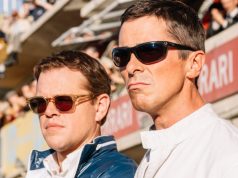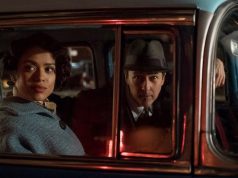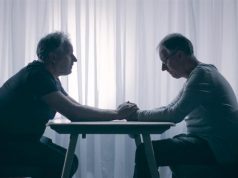The amazing gimmick behind “Russian Ark” is this: It is shot in one unbroken 90-minute take. Shooting on digital video made it technically possible, because DV cameras don’t have to be reloaded every 10 minutes the way film cameras do. Persuading the State Hermitage Museum in St. Petersburg, Russia, to close down for a day so director Aleksandr Sokurov could film there made it logistically possible.
Of course, just because a thing can be done doesn’t necessarily mean it ought to be done, or that the results will be worthwhile to an audience that doesn’t care HOW you made your movie. “Russian Ark” falls under the category of films you respect more than you enjoy. One can be awestruck at the feat Sokurov pulls off in capturing his story in one take, even while occasionally being bored by the story itself.
It’s more idea than story, but the idea is intriguing. A man through whose eyes we see everything awakens to find himself at the State Hermitage Museum in a former century. As he wanders from room to room, he encounters figures from Russian history such as Catherine the Great and Nicholas II, in addition to art spanning three centuries. Somehow, all these people and things that have been associated with the museum at some point have come to co-exist there now, allowing our narrator to see them all at once. It’s reminiscent of the way some people believe God sees time — not in chronological order, but all laid out before him at once.
Shooting the film meant coordinating several hundred actors, and Sokurov even captures a massive ballroom scene with an orchestra and dozens of dancers. (If you’re comparing, Hitchcock’s single-take film, “Rope,” had only nine characters and was set in a small apartment.) There is also the attraction of knowing the story is being staged not on a set, but in an actual place — that the action had to fit the museum, not the other way around. It’s so organic and basic, this idea of creating drama in the world around you, rather than constructing an artificial place to stage it.
The film hints at Russia’s extremely tragic 20th century, and is adamant about learning from history. “Everyone can see the future, but no one can see the past,” someone says. There we have what limits the film’s impact for an American audience: We know the basics of Russian history, but we do not have the same emotional connection to it that a Russian audience would. We see this merely as an impressively assembled film; a Russian would see it as a brilliant masterpiece of Russian thought.
Would the film work if it had been filmed conventionally? Probably not. What makes it work to the extent that it does is its fluidity, the sense that all of this is existing in one time and one place. That effect would be greatly reduced if there were editing or a compression of time. But that’s a moot point. The film WAS shot in one take, and it stands as an extraordinary technically achievement, if nothing else.
B- (1 hr., 35 min.; in Russian with subtitles; )





